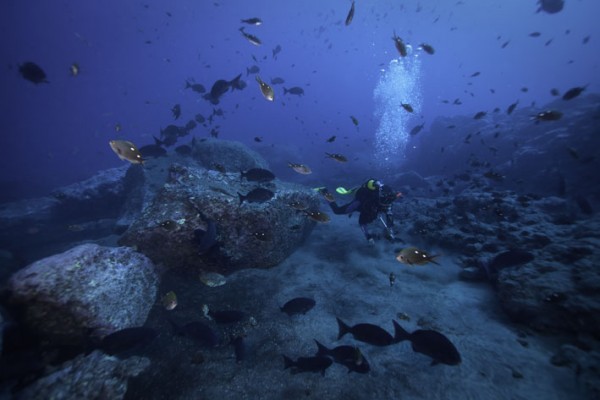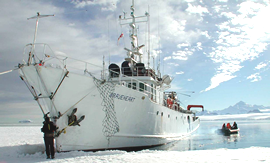Our land team didn’t find Macauley all that welcoming and even though the marine team had a successful time underwater they have described the waters around the island as being more “barren” than the waters around Raoul.
The big boulders surrounded by sand (seen in the photo of Tom diving at Macauley Island a couple of days ago) were very typical of the areas we dived there.
Macauley was surprisingly different from Raoul – it seemed much more barren (although we actually collected more fish species at each rotenone station than we had at Raoul) and much more temperate. There was very little coral. The water was about a degree colder than Raoul, about 20 degrees (but for my money it felt colder than that!).

Diving at Macauley: Tom’s kept company by two spot demoiselles and bluefish © Richie Robinson
Most of the fish in this underwater photo are either two spot demoiselles (you can see the distinctive white spots on some of them) or bluefish.
Two spot demoiselles are endemic to New Zealand and the Kermadecs, and are some of the commonest schools of fish you see around New Zealand. They feed on plankton, especially small copepods. Bluefish are found in the south-west Pacific, from Lord Howe to New Zealand and also in Australia. They only form small schools but they browse on seaweeds and small animals in the algae, and are an important factor in reef ecology.












